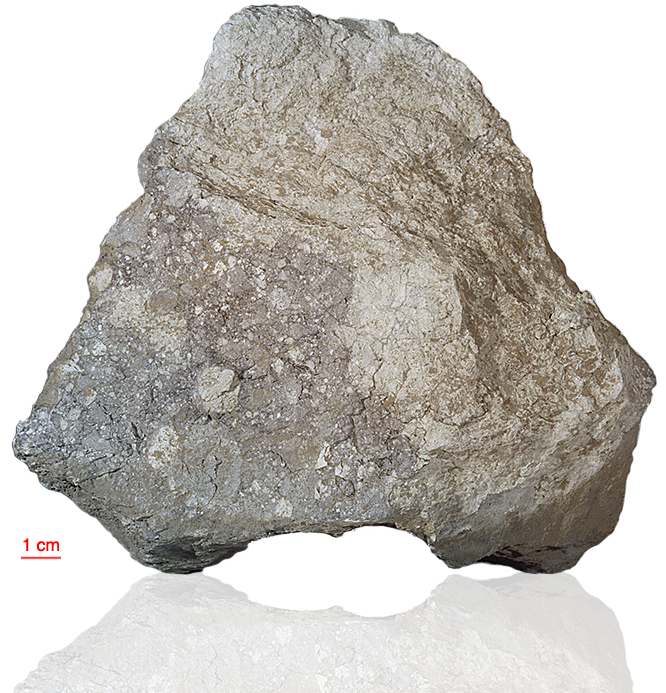
Fact sheet
67915 is composed of two main lithologies, both polymict - a white breccia lithology composed of rounded clasts of fine-grained anorthositic breccia, and a grey breccia lithology composed of a collection of dark clasts, including sodic ferrogabbro and troctolitic anorthosite. Most of the grey clasts are fine-grained impact melt rocks with a variety of texture and shock features. The white clasts are microcrystalline, granulitic, feldspathic impactites.
The sample weighed 2600 grams before analysis. Various lithologies have been dated between 3.91 and 4.3 billion years (Ar/Ar).
Further details of this and other Apollo samples are here: http://curator.jsc.nasa.gov/lunar/
The Apollo 16 landing site was in the hilly region around Descartes crater in the lunar highlands. The landing spot was chosen to allow the astronauts to gather geologically older lunar material (Descartes Formation and the Cayley Formation) than the samples obtained in the first four landings, which were in or near lunar maria.
The mission lasted 11.1 days, with a stay on the lunar surface of 71 hours. The crew were on the lunar surface for 20.2 hours during which they traversed approximately 27 kilometers and collected approximately 96 kilograms of samples.
Apollo 16 was launched on 16 April 1972.






